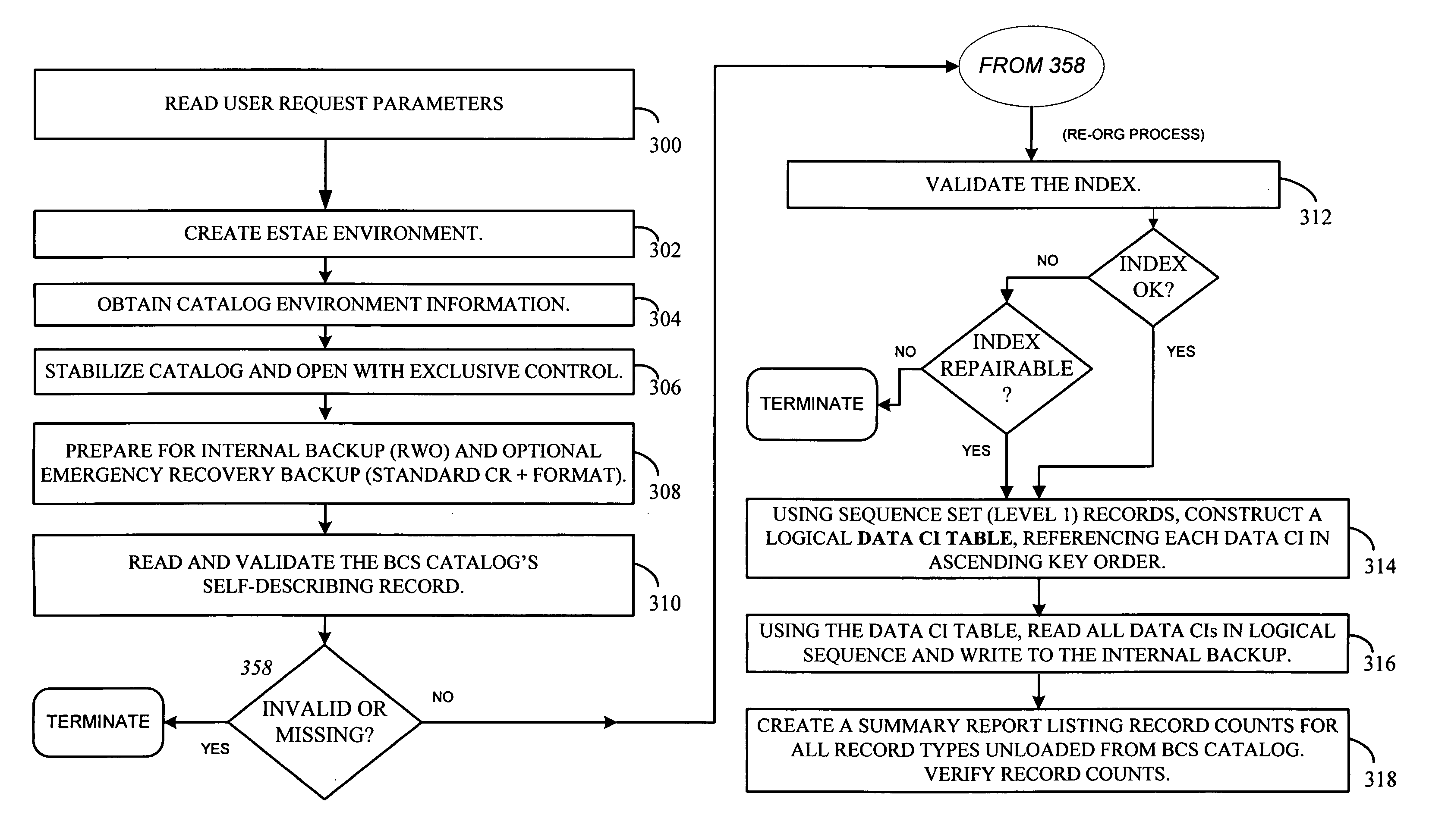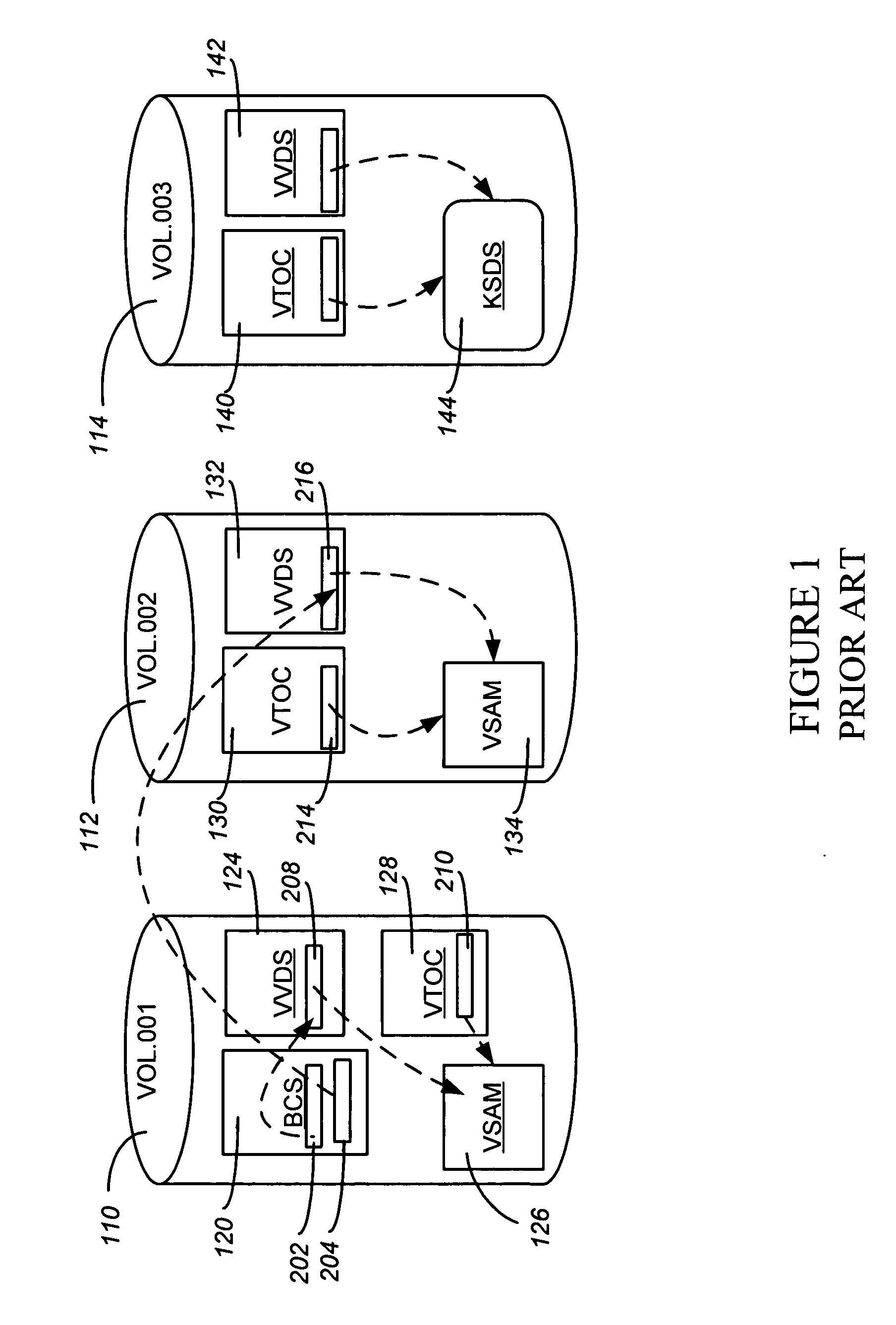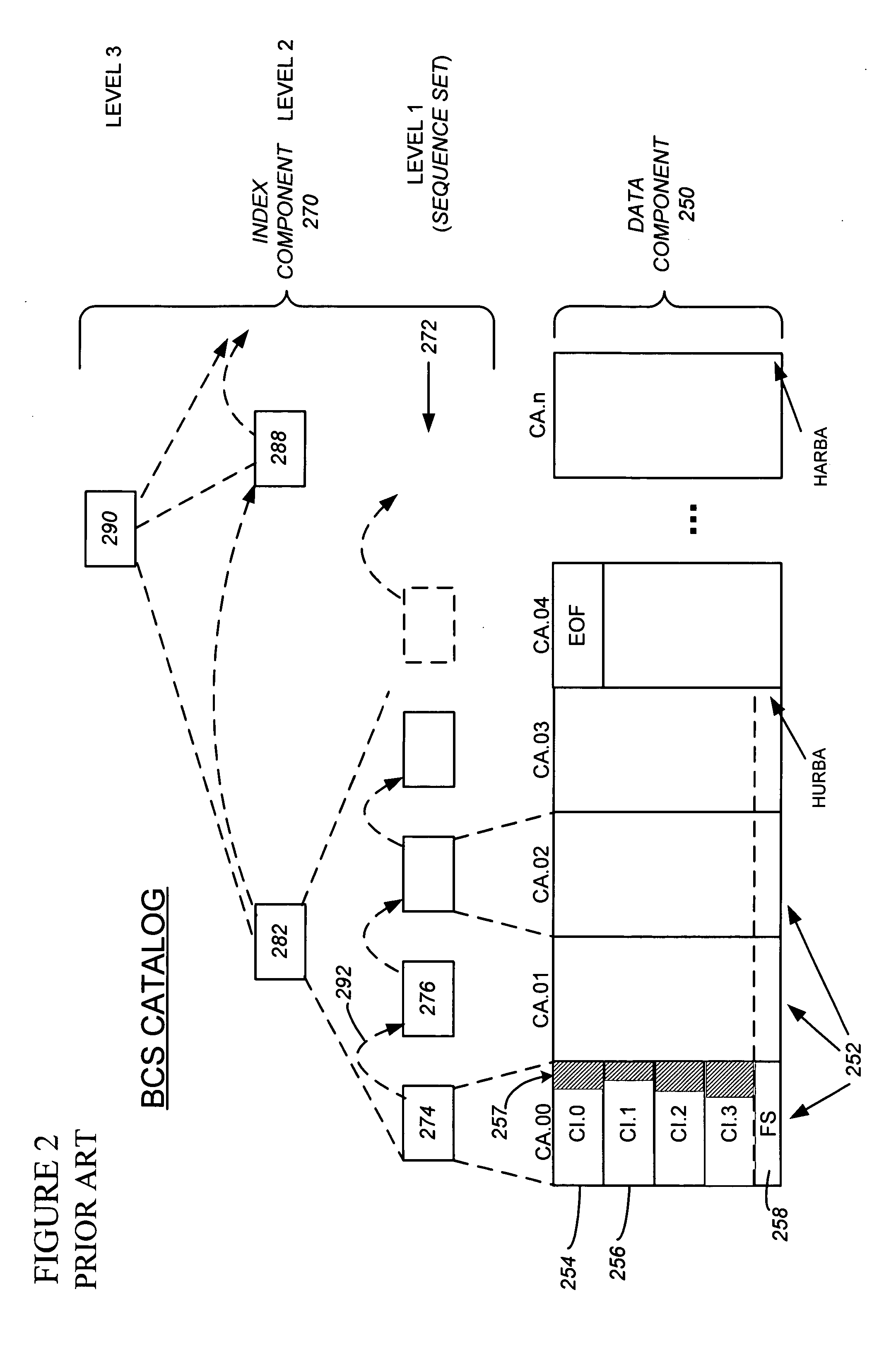Reorganization and repair of an ICF catalog while open and in-use in a digital data storage system
a digital data storage system and catalog technology, applied in the field of digital data storage systems, can solve the problems of inability to repair or clean up catalog management functions, inability to perform catalog management functions without risking the integrity of the catalog's physical structure, and inability to gain access to applications attempting to locate them, etc., to achieve the effect of minimizing catalog management downtime and minimizing the impact of application jobs
- Summary
- Abstract
- Description
- Claims
- Application Information
AI Technical Summary
Benefits of technology
Problems solved by technology
Method used
Image
Examples
Embodiment Construction
[0068] Referring now to FIG. 3, the first step 302 of a presently preferred embodiment establishes the ESTAE environment, so that any ABENDs that might occur during processing will be trapped and handled within the logic. Step 304 obtains catalog environment information, validating that the named catalog is appropriate, and establishing the environment in which the process will execute. In a presently preferred embodiment, much of this information will be the result of specifications or parameters on the user command that initiates the process (see 300). Some options are: [0069] The name of the single BCS to be re-org'ed or repaired. The implementation will require that the BCS to be re-orged or repaired must be currently connected to the master catalog as a user catalog. It cannot be the master catalog of the MVS operating system on which the process is run, although it can be a master catalog of another system if it is not currently an active master catalog at the time of the proc...
PUM
 Login to View More
Login to View More Abstract
Description
Claims
Application Information
 Login to View More
Login to View More - R&D
- Intellectual Property
- Life Sciences
- Materials
- Tech Scout
- Unparalleled Data Quality
- Higher Quality Content
- 60% Fewer Hallucinations
Browse by: Latest US Patents, China's latest patents, Technical Efficacy Thesaurus, Application Domain, Technology Topic, Popular Technical Reports.
© 2025 PatSnap. All rights reserved.Legal|Privacy policy|Modern Slavery Act Transparency Statement|Sitemap|About US| Contact US: help@patsnap.com



